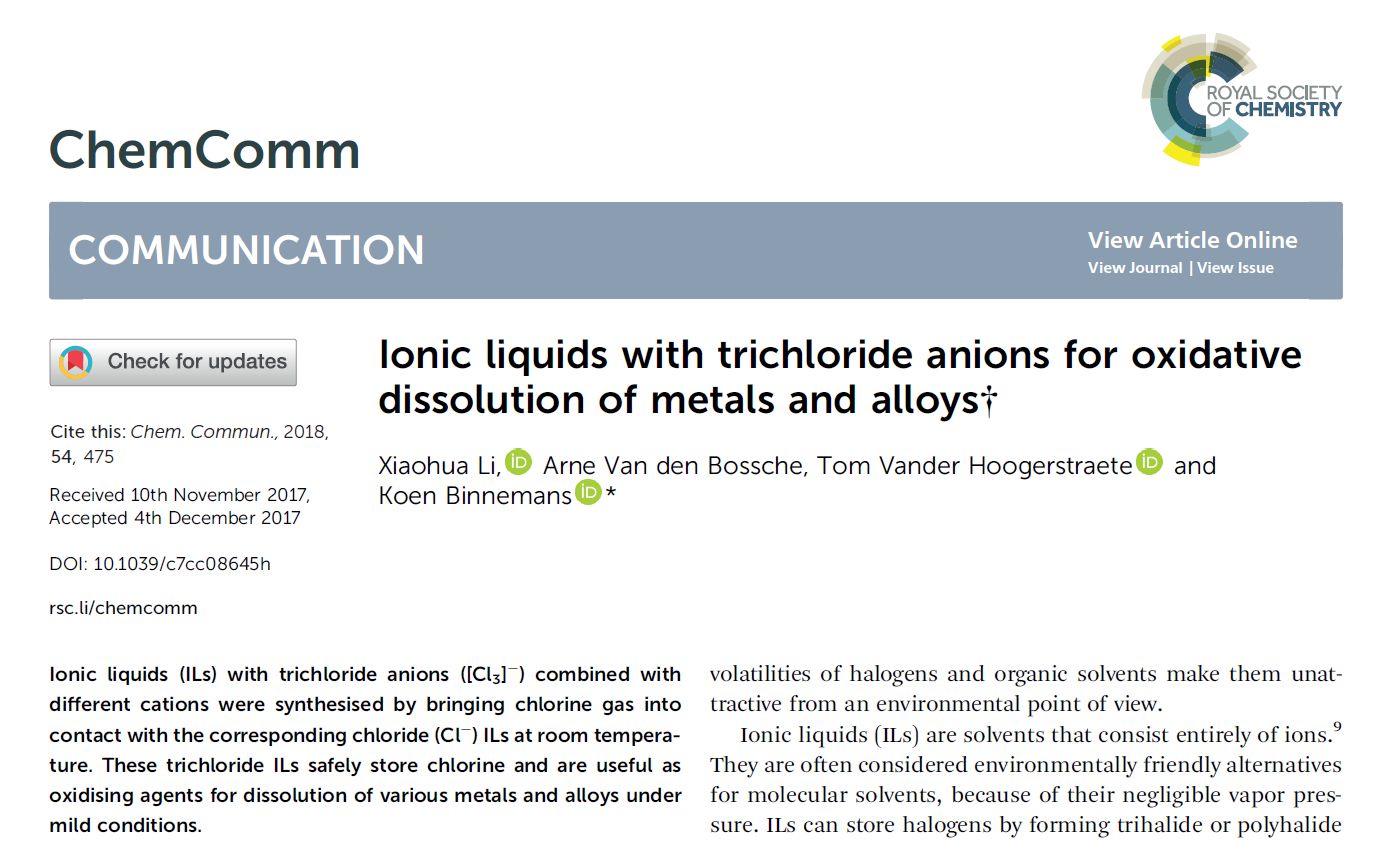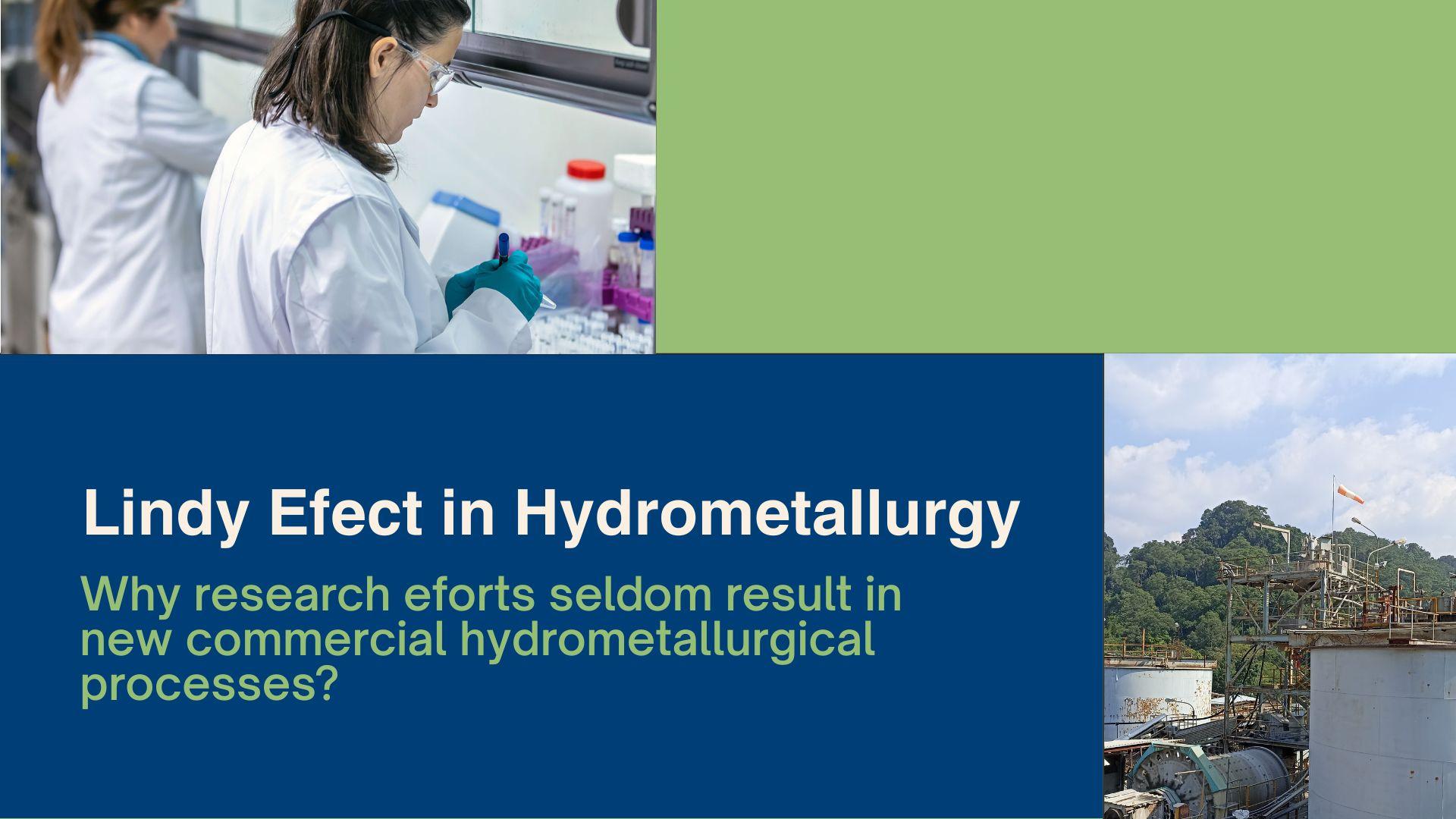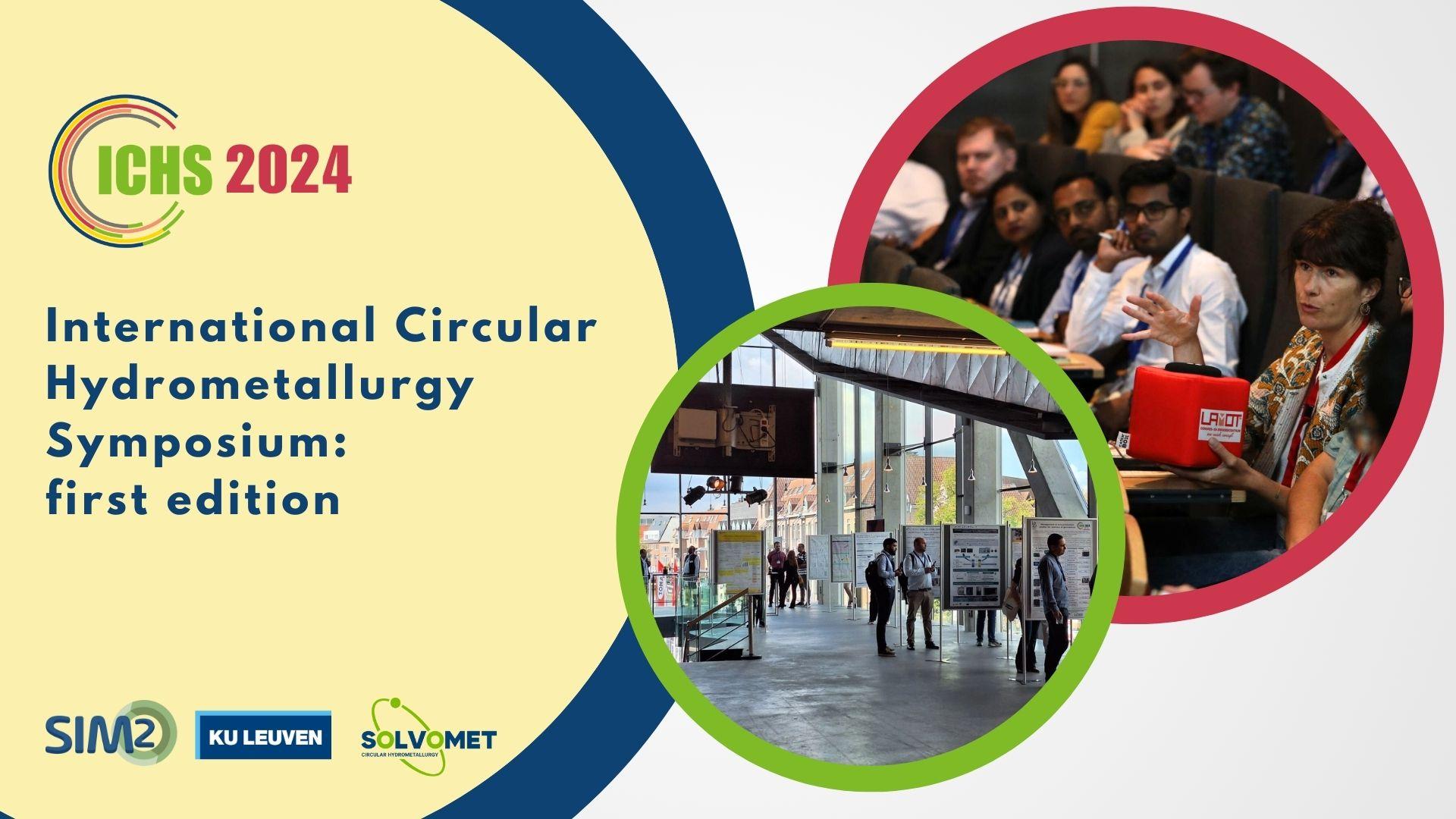In the framework of the ERC SOLCRIMET project KU Leuven researchers have synthesised trichloride ionic liquids which can be used for oxidative dissolution of metals and alloys under mild conditions. (Leuven, 20-2-2018)
Dissolution of metals and alloys is an essential step for the recycling of metals from end-of-life products. Examples are recycling of gallium, indium and antimony from LEDs, samarium and cobalt from magnets, and gold from waste electrical and electronic equipment (WEEE). Traditional procedures for metal dissolution are pyrometallurgical and hydrometallurgical processes. Pyrometallurgy involves high-temperature processes which are often energy intensive. Hydrometallurgy is based on dissolving the metals in strong acids (e.g., H2SO4 and HCl) or bases or involving microorganisms (bioleaching). However, this can lead to problems: formation of flammable or toxic gases and a large consumption of chemicals. In the case of dissolution of gold, conventional processes are based on aqueous solutions of cyanide salts or aqua regia, which are either toxic or highly corrosive.

In this communication paper, we report on the synthesis and characterisation of ionic liquids (ILs) with trichloride anions ([Cl3]–), A total of 10 trichloride ILs with various cations were prepared by bringing the chlorine gas into contact with their corresponding chloride (Cl–) ILs. Their densities and viscosities, melting points and glass transition temperatures were measured. All the trichloride ILs were liquid at room temperature, even though some of the starting chloride ILs were solids. Some of them have a melting point above 5 °C, so solid trichloride ILs could be obtained below this temperature. The solid trichloride ILs are expected to be able to store chlorine gas more stably than the liquid form, which makes these trichloride ILs attractive for safe chlorine gas storage.
In total of 8 metals and 2 alloys shown in the figure below could be completely dissolved in trichloride ILs at room temperature. Some metals such as tantalum and platinum are difficult to be oxidised by trichloride ILs. Thus, the trichloride ILs can selectively dissolve some metals while leaving other metals untouched. This is a useful property to achieve separation of mixtures of metals, for instance to separate the highly valuable metals Au and Pt. Further research on metal dissolution with these trichloride ILs is ongoing in our laboratory.

Fig.: Mixtures of metal chlorides and trichloride ionic liquid after complete dissolution of the corresponding metals and alloys.
Paper information and acknowledgements
- Xiaohua Li, Arne Van den Bossche, Tom Vander Hoogerstraete and Koen Binnemans, Ionic liquids with trichloride anions for oxidative dissolution of metals and alloys, Chem. Commun., 2018, 54, 475. Download Open Access paper here.
- The research leading to these results received funding from the European Research Council (ERC) under the European Union’s Horizon 2020 Research and Innovation Programme: Grant Agreement 694078—Solvometallurgy for critical metals (SOLCRIMET).
 Bio Xiaohua Li. Xiaohua Li is a postdoctoral researcher working with Prof. Koen Binnemans in the group of LIC in KU Leuven. She obtained her doctor degree from university of Twente in the Netherlands in February 2017 and started her work on SOLCRIMET project in KU Leuven from November 2016.
Bio Xiaohua Li. Xiaohua Li is a postdoctoral researcher working with Prof. Koen Binnemans in the group of LIC in KU Leuven. She obtained her doctor degree from university of Twente in the Netherlands in February 2017 and started her work on SOLCRIMET project in KU Leuven from November 2016.







